Treaty Oak Park
Introduction
Text-to-speech Audio
Images
Treaty Oak from the Walkway
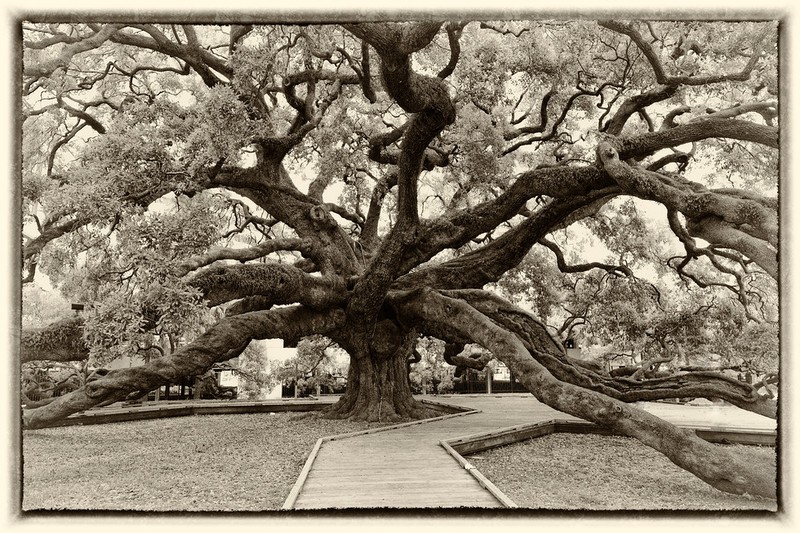
Treaty Oak, covered in lights when it was part of Dixieland Amusement Park, 1907-1916
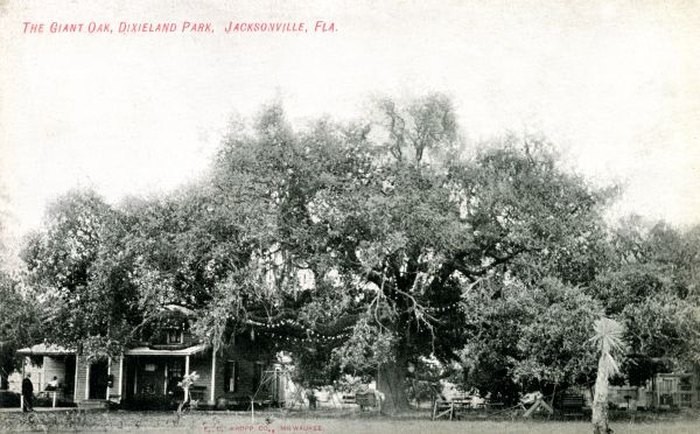
Treaty Oak from the walkway
.jpg)
Treaty Oak from the walkway, under the branches

A wide view of Treaty Oak to capture its 145-foot span of branches
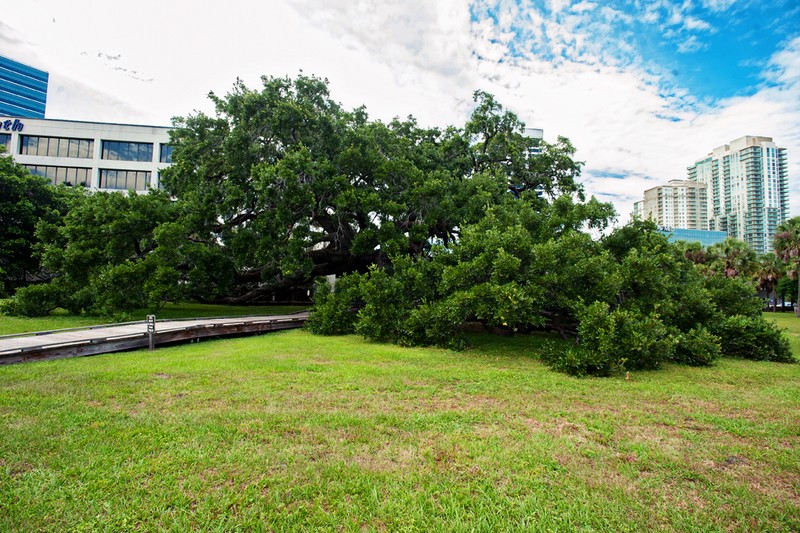
Entrance to the Dixieland Amusement Park, 1907-1916
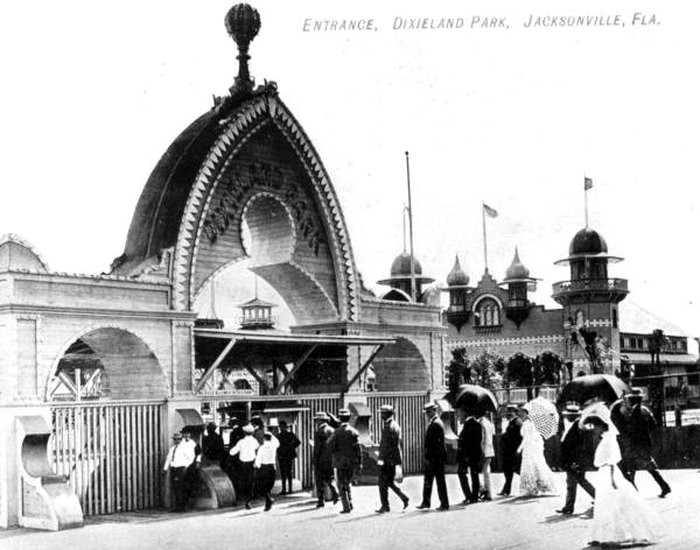
Marker for the Jessie Ball DuPont Park, marking Treaty Oak as "Jacksonville's Favorite Oak"

Marker for the Jessie Ball DuPont Park, marking Treaty Oak as "Jacksonville's Favorite Oak"
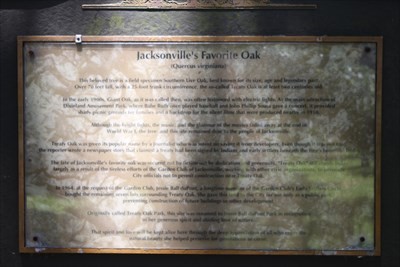
Visitors passing under Treaty Oak on the walkway
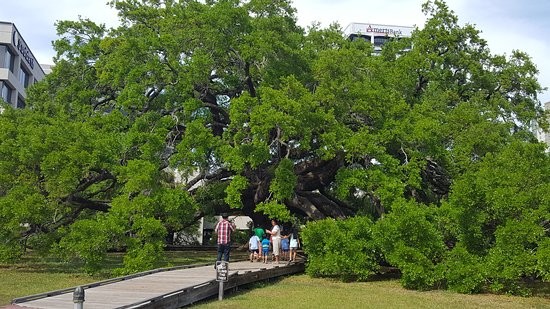
Backstory and Context
Text-to-speech Audio
Treaty Oak is believed to be the oldest living organism in Jacksonville, with a history dating back to before the establishment of the city itself. The massive tree is at least 250 years old, with some forestry experts suggesting it might be significantly older. Aside from its age, Treaty Oak is magnificent both in its stature and the tale that kept the tree preserved since the 1930s. At 70 feet tall and 25 feet in circumference, the massive landmark is visible long before visitors reach its branches that touch the ground. The crown spreads over 145 feet, making it an ideal spot for tourists and city residents alike to escape the sun or revel in awe of the sheer size, beauty, and history of the tree. It has been host to wedding venues, countless “selfies” and photographers desperately attempting to capture its size in one frame, concerts, and more, but what truly makes Treaty Oak fascinating is the lie that was told to keep its roots firmly planted in the Jessie Ball DuPont Park where it stands today.
Originally, the tree was known as Giant Oak, and stood in the middle of the Dixieland Amusement Park that opened in 1907. At that time, the tree’s branches were decorated with lights, and it stood as the centerpiece to the theme park that was constructed around it. Famous faces were featured with Treaty Oak as the backdrop; John Philip Sousa had concerts under the tree and Babe Ruth played exhibition baseball games nearby. It was also a location rented out to numerous silent film companies to shoot movies. Children in the amusement park often climbed its branches as if it was just another ride or attraction at the park. Dixieland closed in 1916, and several years later, Treaty Oak’s future was threatened.
In the 1930s, city developers were expanding into the Southbank area, and the park became one of their targets. In order to protect the longstanding tree, a local reporter decided to take matters into his own hands. Pat Moran wrote an article claiming white Floridians and early Native American settlers had signed a treaty under Giant Oak, leading to the Garden Club of Jacksonville making attempts to preserve it. Soon, the story was reprinted, with other versions claiming the treaty was between Andrew Jackson and Seminole Chief Osceola, although Jackson never actually traveled into the Jacksonville area. Because of claims, even today, that the area was Osceola’s favorite camp ground and was used for Native American councils of war, the story stuck, and people in the city dubbed Giant Oak as a landmark for the “historic event” that never actually took place there. So, in 1934, Jessie Ball DuPont’s foundation purchased the land Giant Oak was on, under DuPont’s advisement. A member of the club’s Early Settler’s Circle, DuPont may have been the only other person to know that the story of the treaty was false; nevertheless, she was determined to protect the tree.
After Moran’s story, Giant Oak was instead coined Treaty Oak. However, in 1964, its lifespan was again threatened by developers and mistreatment from residents who did not recognize that their enjoyment of the tree was also causing it to suffer. Not only were there plans to construct a nine-story apartment building on the site, but there are claims that experts counted 135 children in the tree at one time. Rope swings and playful kids weakened the branches, while couples carved their initials into the fragile bark of the trunk. “Precision” jumpers used it as a parkour activity in which they jumped through the limbs, trying to avoid them. That year, DuPont and the Garden Club bought the remaining seven lots around the tree to be given to the city for use as a public park. Upon DuPont’s death in 1970, the park was named in her honor.
In 1986, JEA began a program to preserve the history of Treaty Oak by growing seedling from the oak’s acorns, which would be available through Greenscape to be distributed and replanted throughout the city. Since that time, hundreds have been planted. A historical marker on the Camp Milton Historic Preserve near Halsema Road North and Old Plank Road marks the site where one of those seedlings has grown, named the “Treaty Live Oak” marker. In 1995, a combined effort of the city, the DuPont Fund, private groups, and individuals was made to preserve Treaty Oak itself. Lightning protection systems as well as cables to support heavy limbs that might damage the trunk were installed, and a wooden walkway was built around the tree so visitors to the park could still walk under its branches. In 2001, it was featured as one of 17 trees in Jeffrey Meyer’s America’s Famous and Historic Trees: From George Washington’s Tulip Poplar to Elvis Presley’s Pin Oak. Treaty Oak is estimated to live another 400 years thanks to the preservation efforts that began with a lie in the 1930s and continues today with an appreciation both for the tree and its storied history.
Sources
- Strickland, Sandy. Call Box: Treaty Oak has storied history but no treaty, The Florida Times-Union. September 9th 2018. Accessed September 27th 2020. https://www.jacksonville.com/news/20180909/call-box-treaty-oak-has-storied-history-but-no-treaty.
- W., Victoria. This History Of This Unique Florida Tree Is Bizarre But True, Only In Your State. May 8th 2016. Accessed September 27th 2020. https://www.onlyinyourstate.com/florida/treaty-oak-fl/.
- Jessie Ball duPont Park-Jacksonville's Favorite Oak, Waymarking. Accessed September 27th 2020. https://www.waymarking.com/waymarks/WMM3FC_Jessie_Ball_duPont_Park_Jacksonvilles_Favorite_Oak.
- Jessie Ball DuPont Park, City of Jacksonville. Accessed September 27th 2020. https://www.coj.net/departments/parks-and-recreation/recreation-and-community-programming/parks/jessie-ball-dupont-park.
- Treaty Oak: A History Rooted in Myth, Metro Jacksonville. July 18th 2015. Accessed September 27th 2020. https://www.metrojacksonville.com/article/2015-jul-treaty-oak-a-history-rooted-in-myth.
- Saturday Editorial: How Treaty Oak became a landmark, The Florida Times-Union. March 24th 2017. Accessed September 27th 2020. https://www.jacksonville.com/opinion/editorials/2017-03-24/saturday-editorial-how-treaty-oak-became-landmark.
- Treaty Live Oak, Historical Marker Database. Accessed September 27th 2020. https://www.hmdb.org/m.asp?m=142991.
- Moore, Dawna. Treaty Oak, Jacksonville, Florida, Fine Art America. Accessed September 27th 2020. https://fineartamerica.com/featured/treaty-oak-jacksonville-florida-dawna-moore-photography.html.
Metro Jacksonville, https://www.metrojacksonville.com/article/2015-jul-treaty-oak-a-history-rooted-in-myth
https://www.onlyinyourstate.com/florida/treaty-oak-fl/
Dawna Moore Photography, Dec. 8, 2019, https://fineartamerica.com/featured/treaty-oak-jacksonville-florida-dawna-moore-photography.html
Medium, https://medium.com/@jerundle/jacksonvilles-treaty-oak-in-jessie-ball-dupont-park-9fb5820825c7
Metro Jacksonville, https://www.metrojacksonville.com/article/2015-jul-treaty-oak-a-history-rooted-in-myth
https://www.onlyinyourstate.com/florida/treaty-oak-fl/
https://www.waymarking.com/waymarks/WMM3FC_Jessie_Ball_duPont_Park_Jacksonvilles_Favorite_Oak
https://www.waymarking.com/waymarks/WMM3FC_Jessie_Ball_duPont_Park_Jacksonvilles_Favorite_Oak
Trip Advisor, https://www.tripadvisor.com/LocationPhotoDirectLink-g60805-d3341193-i248326265-Jesse_Ball_Dupont_Park-Jacksonville_Florida.html
